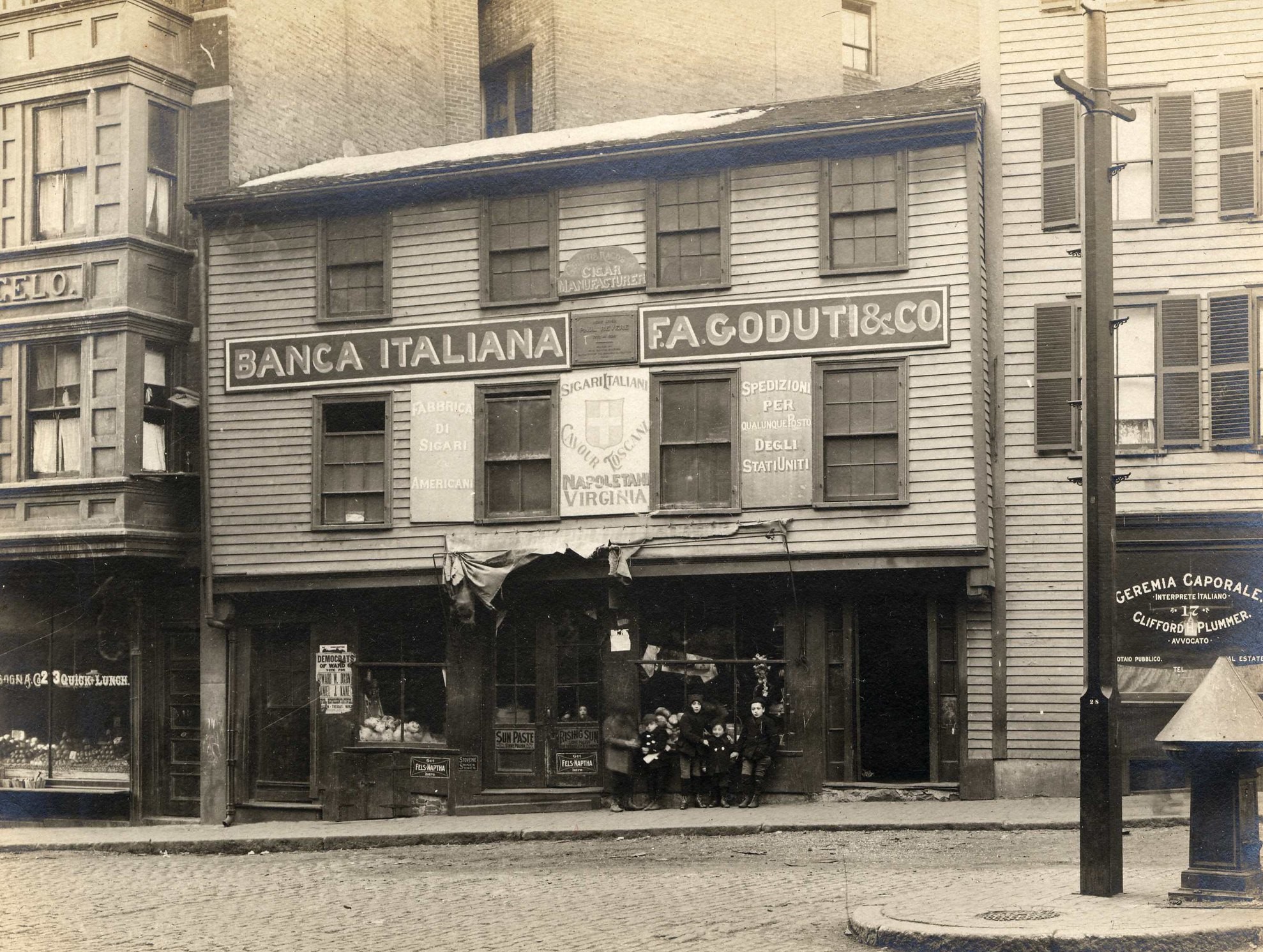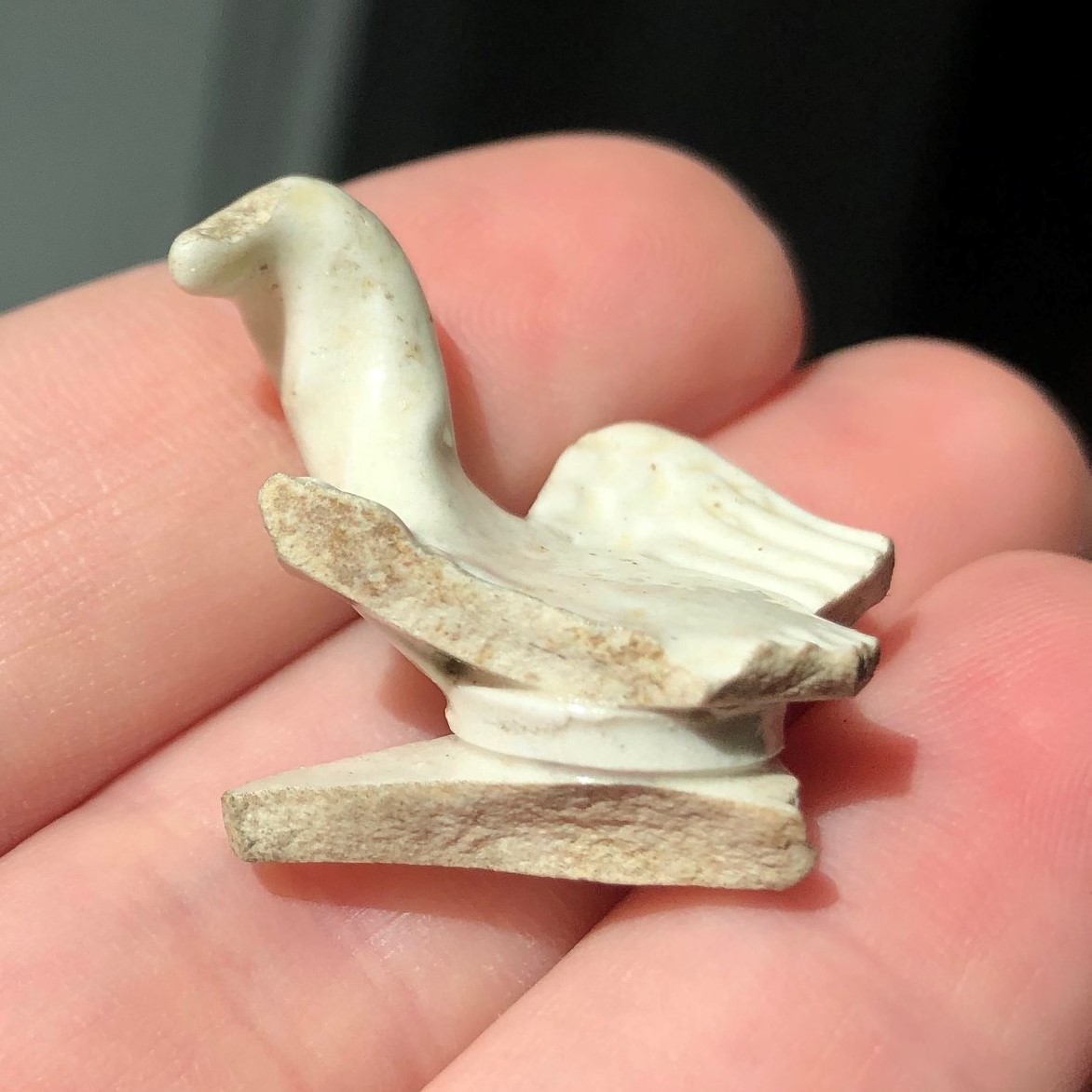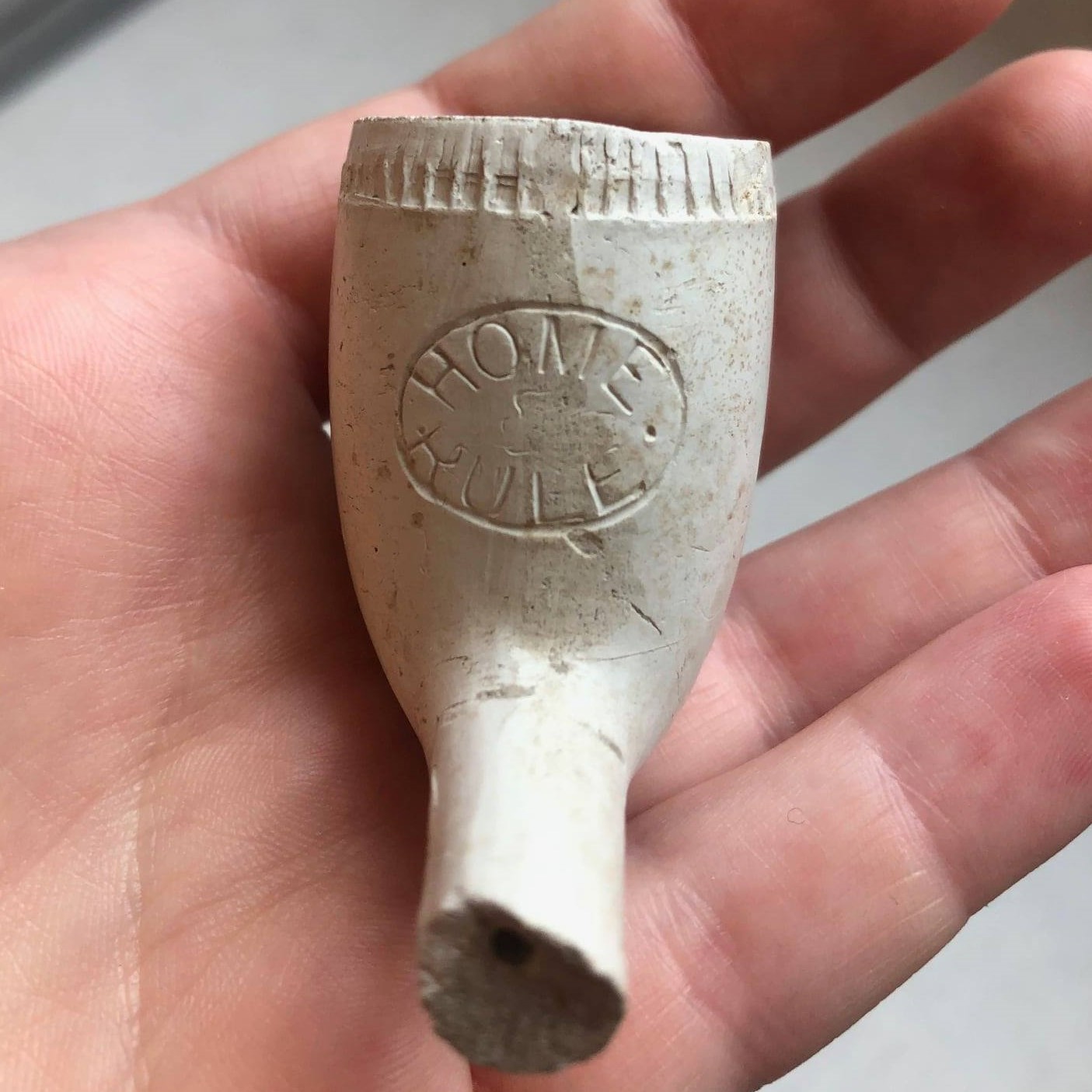Paul Revere House and Lathrop Place archaeological sites
In 1983, archaeologists surveyed the yard of the ca. 1680 Paul Revere House. In 2010 and 2011, they surveyed 5 and 6 Lathrop Place, two 1835 row houses on what was once the back yard of the Revere house property.
The site
Boston is the traditional homeland of the Massachusett Tribe. The Paul Revere House was built in Boston’s North End around 1680. It is one of the last remaining 17th-century urban dwellings in the country. The house sits on the site of the former parsonage of the Second Church of Boston. This earlier building was the home of Increase Mather from 1670 until it burned in the Great Fire of 1676 and was replaced with the current building. A wealthy merchant named Robert Howard was the first to own the new house. Howard was the enslaver of a man named Samuel who lived on the property. He also enslaved a man named Frank, a woman named Catherine, and Samuel’s two children. They may have lived on the property as well, but this has yet to be confirmed.
After Howard’s death, the property passed to his wife, Elizabeth, and then their daughter, Sarah Wyborn. Sarah’s inheritance also included a house immediately to the north of the Revere House. So, it is unclear who occupied it after Elizabeth’s death. Documentary evidence shows a 1737 application from a Mr. Yardley Lewis to set up a still in the house. Sarah sold the property to Andrew Knox, a mariner, in 1741 and it passed to his son, also Andrew. The younger Knox defaulted on his mortgage payments and the property passed to John Erving, who allowed Knox to continue living there.
Paul Revere purchased the house from Erving in 1770 and moved in with his family. Revere’s wife, Sarah, died in 1773 and he married his second wife, Rachel, later that same year. However, they may not have lived there for most or all of the 1780s, during which time the house was rented out to several people. The family returned to the house in the 1790s. They remained there until Revere sold the house in 1800 to a trader named John Hunting and purchased a large brick house on Charter Street that he had been renting. Hunting sold the Revere house the very next day to another trader, John Loring.
As this trend of property owners moving out of the neighborhood continued, the character of the area changed. It became more run-down and was home to boarders and renters who came and went frequently. By 1867, the house began to house businesses in addition to renters under the ownership of Catherine and James Wilkie, who kept the property until 1891.
Waves of immigrants came to Boston during the second half of the 19th century. Between the 1850s and the 1880s, these were largely Irish people. After this, the ethnic make-up of the North End shifted to Eastern European Jewish and Italian immigrants. The house functioned as a tenement building and housed various shops on the first floor in the last part of the 1800s and early 1900s. In 1902, the house was acquired by a Revere descendant and, in 1907, the Paul Revere Memorial Association was formed. The house was restored to its 17th-century exterior appearance and opened as a museum in 1908.
In 1835, Lydia Loring, the owner of the Revere House, was operating it as a boardinghouse. That year, she sold off the back portion of her land for development. Within a year, the row houses at 5 and 6 Lathrop Place had been built on the lot facing a small alley exiting on Hanover Street.
Like the Revere House behind it, Lathrop Place was home to a diverse group of immigrants during the 19th century. In 2007, the Paul Revere Memorial Association purchased the two row houses, restored them, and converted them into its visitor center.
The digs
The Office of Public Archaeology at Boston University conducted an archaeological survey of the Revere House in 1983. It included the Revere lot as well as the neighboring Barnard and Hichborn lots. It assessed the potential effects of the construction of a shelter for a Revere-cast bell, expansion of the gardens, and the replacement of a staircase behind the Revere house.
The excavation revealed several intact living surfaces. These included the buried 17th-century topsoil, and several layers possibly associated with the burning of Increase Mather’s house. It also located:
- yard and garden features dating to the first half of the 18th century (including a c. 1720 cobbled surface)
- a mid-19th century cobbled surface, and
- a wood-lined privy (outhouse) from the second half of the 1800s.
The second series of excavations took place in the basement of 5-6 Lathrop Place, which used to be the backyard of the Revere family. These were conducted in response to a plan to rehabilitate the building for use as a visitor center. Archaeologists performed two phases of survey. Phase I occurred in 2010 and located intact 18th-century deposits, prompting a second phase of investigation. Phase II was carried out between 2011 and 2014. They found that the construction of Lathrop Place capped deposits ranging in date from the 17th through 19th centuries.
The results
In all, investigations yielded 27,960 artifacts. Features included:
- a clay and wood lined privy made from a metal-hooped barrel dating from c. 1790-1835, and
- a similar privy dating from c. 1835-1884.
Archaeologists also found several drains ranging in date from the mid-18th century to the 1950s and a cobblestone pavement from the late 17th to early 18th century. Artifacts included household refuse, like:
- animal bones left over from food consumption
- ceramic fragments, and
- byproducts from coal heating and cooking.
There were personal items as well. These included clay tobacco pipe fragments, buttons, a pierced cowrie shell, and even leather shoe parts.
The excavations shed light on several aspects of life in the North End over the past 400 years. The property had drainage problems from the very beginning (hence the installation of the cobblestone pavement in the 17th century and the many drains placed over the following centuries). Finds from the privies and living surfaces showed social and economic changes in the neighborhood. The 17th and early 18th century occupants of the North End were wealthy merchants who could afford fancy imported items. The 18th century saw a demographic transition to middle class craftspeople. The 19th century marked a transformation to a densely populated community of immigrants and working class boarders and renters.
The data
Paul Revere House Artifact catalog
Artifact count: 13,796 artifacts
Complete spreadsheet catalog of the artifacts from the 1983 Paul Revere House excavation
Lathrop Place Phase I and II Artifact Catalogs
Total artifact count: 14,977 artifacts
Complete spreadsheet catalog of the artifacts from the Phase I & II excavations at Lathrop Place
Paul Revere House Digital images
Omeka.net searchable artifact and image database for Paul Revere House
Paul Revere House artifact images and descriptions
Lathrop Place Digital Images
Omeka.net searchable artifact and image database for Lathrop Place
Lathrop Place artifact images and descriptions
Related links
Visit the Paul Revere House website.
This report may contain inaccuracies. Contact the Paul Revere Memorial Assoc. for the most recent data.
Independent Archaeological Consulting PRMA Lathrop Place Site Report (2010)
Public Archaeology Laboratory PRMA Lathrop Place Site Report (2014)




